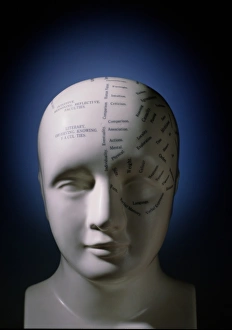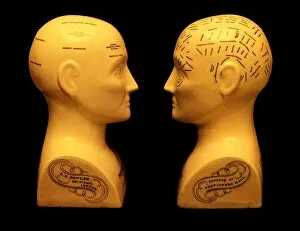Quack Treatment Collection
"Unveiling the Pseudoscience: Exploring the Quackery of Phrenology" Step into the world of quack treatments, where bizarre beliefs and dubious practices reigned supreme
All Professionally Made to Order for Quick Shipping
"Unveiling the Pseudoscience: Exploring the Quackery of Phrenology" Step into the world of quack treatments, where bizarre beliefs and dubious practices reigned supreme. The captivating Phrenology bust by L. N. Fowler serves as a haunting reminder of this pseudoscientific phenomenon. With its intricate details, the Phrenology bust stands as an emblematic symbol of an era when charlatans peddled their questionable cures to unsuspecting individuals seeking relief from ailments both real and imagined. Artwork depicting a medical charlatan selling quack cures transports us back to a time when snake oil salesmen roamed the streets, armed with promises of miraculous healing powers. These cunning tricksters exploited people's desperation for quick fixes, capitalizing on their vulnerability. The mesmerizing Phrenology chart reveals another facet of this deceptive practice. Believers in phrenology claimed that one's character traits and mental abilities could be determined by examining bumps and depressions on the skull. This flawed theory gained popularity despite lacking any scientific basis. Phrenology heads or busts were used as tools to measure these supposed cranial indicators, further perpetuating this misguided belief system. Countless individuals fell victim to these pseudo-medical practices, hoping for answers within these hollow sculptures. As we gaze upon multiple Phrenology busts lined up before us, it becomes evident how deeply rooted this quackery was in society at that time. People sought solace in these objects, unaware that they were merely vessels for unfounded claims rather than genuine remedies. Let us not forget history's cautionary tale about embracing unproven treatments without scrutiny or evidence-based research. The allure may be tempting; however, it is crucial to approach such claims with skepticism and critical thinking. In our modern age marked by advancements in medicine and science, we must remain vigilant against falling prey to similar forms of quackery.







